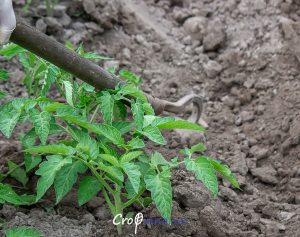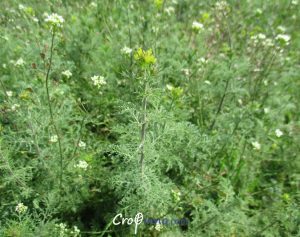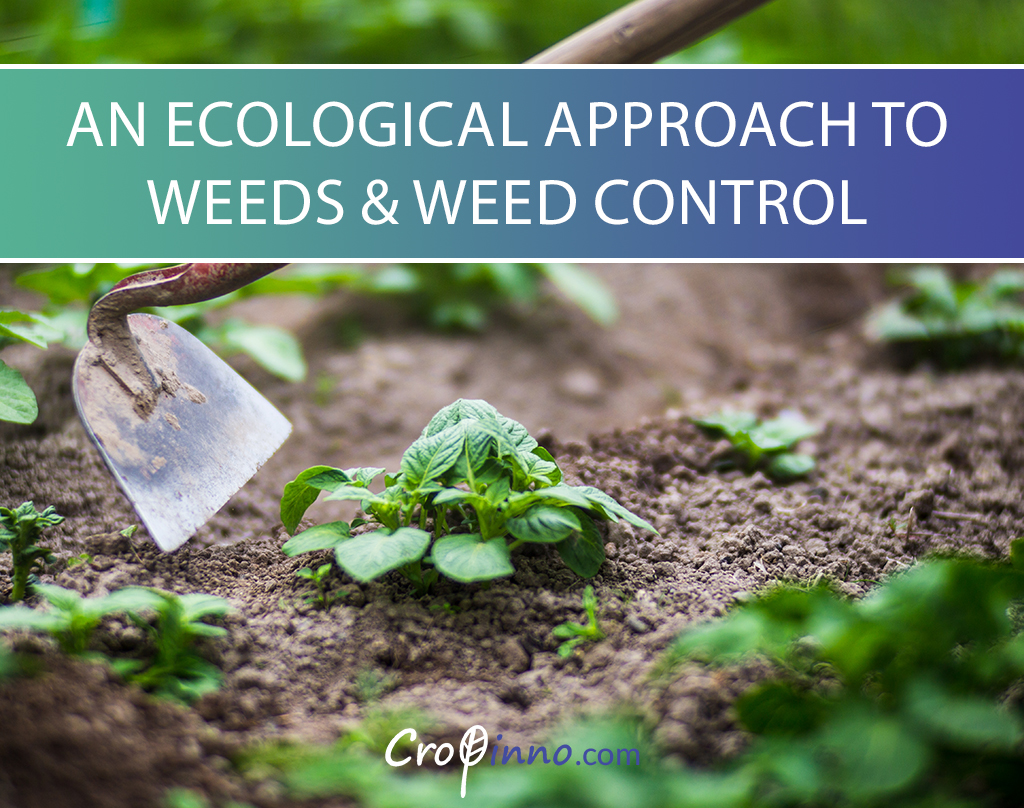Weeds are widely regarded as the most expensive factor to fight against in agriculture. Weeds cause more damage to agricultural fields than insect pests, rodents, birds, plant pathogens, and root-feeding nematodes combined, costing farmers and crops alike. Since many countries’ organic agriculture principles and rules prohibit the use of most herbicides, many organic farmers consider the weeds that grow in their fields to be the most serious obstacle to the successful production of organic crops. On the one hand, the presence of weeds in the cultivation of most crops can be seen as a sign of life, and with a little care and timely weeding, it can be converted into a useful organic material for crop growth. However, weed control costs rise as land area (hectares) increases, and at large hectares, it can be a sign of a failed crop. As a result, ecological understanding of weeds provides the foundation for an effective weed management program that can mean the difference between success and failure.
If it weren’t for weeds, the world would have lost a large portion of its topsoil and, without a doubt, humanity would be facing the problem of mass starvation by now. But why? Because weeds play a significant role in maintaining the ecosystem because they form quickly, protect soil, and restore soil that has been exposed to natural or human disturbances. Because they improve soil structure, some weeds are referred to as “green manure.”
Humans replace the climax community (the dominant vegetation of an area) with a collection of domesticated plant species in modern agriculture to exploit their crop value as food, fodder, fiber, or fuel. Most agricultural systems have a significant impact on and reduce the diversity of the plant community of ecosystems. Agricultural processes, which are intended to maintain favorable conditions for the growth of specific plant species, frequently disrupt ecosystems. This disorder eventually results in a “weed reaction” from nature, particularly in annual cropping systems like vegetables and crops, where the soil is repeatedly prepared for cultivation during tillage operations. Successful chemical or mechanical weed control and management of weeds’ natural response to cultivation starts with an ecological understanding of weeds and their role in the ecosystem.
The Functional Definition of Weeds
We use the term “weed” to refer to an unsuitable, unwanted plant or a plant that is considered a pest and interferes with crop or livestock production, such as Amaranth, Nut grass, Selaginella, and Crabgrass. Weed manuals and herbicide advertising catalogs also list species like clovers (Trifolium spp.), orchardgrass (Dactylis glomerata), tall fescue (Festuca arundinacea), hairy vetch (Vicia villosa), and Jerusalem artichoke (Helianthus tuberosus) as weeds; plants that are useful and valuable for many farmers as fodder, vegetation cover, or food products if grown under the right conditions. However, even “volunteer crops” like wheat, barley, forage soybeans, or even corn are considered weeds if they appear & grow by themselves at an inappropriate and undesirable stage of crop rotation and therefore, weed control actions will be needed to be implemented.
With the help of these examples, we can see how the term “weed” is somewhat connected to how people perceive particular plants or plant species; the more exact definition of a plant depends on how it behaves in a particular field or piece of land at a particular time. Even a valuable forage crop like alfalfa is considered a weed in vegetable gardens.
It should be noted that weeds are most often man-made. human activities can turn plant species into weeds in two ways:
- Providing an ecological atmosphere that is welcoming to the growth of undesirable plants.
- Importing new plant species to a certain region or continent.
In fact, whether a plant is troublesome or not, it is typically referred to as a “weed” if it grows in a garden or field despite not having been planted by the grower. efforts to remove undesirable vegetation will bring pressure on farm budgets, farmers themselves, agroecosystems, fuel resources, and the environment. Typically, only a portion of the weed needs to be removed in order to protect the desired crop. These factors allow us to define a weed as any plant that was not intentionally planted or spread by the grower and that needs to be managed in order to avoid interfering with the growth of crops or livestock. A weed, according to this definition, is a non-agricultural plant that can become a problem if not properly managed; however, its presence is not always harmful, and there is no guarantee that it will be eradicated automatically. Weeds can provide important ecosystem services such as soil protection and rehabilitation. Furthermore, some weeds provide habitat for beneficial organisms, which helps to control some insect pests naturally and biologically. Some weeds also provide us or livestock with nutritious food; many medicinal plants are actually of self-seeding plant species.

What exactly are the weeds doing in my field?
Weeds are nature’s way of covering and protecting soil that has been damaged or destroyed by fire, flooding, landslides, tillage, or other factors. The soil is bare, hungry, and exposed. The soil life, which is critical to its fertility, is weakened in such conditions due to the disruption of the natural flow of nutrient organic compounds through the roots of living plants. The soil surface is normally prone to erosion from rain or wind, which is exacerbated if the plant’s root system is also removed or disturbed. Pioneer plants, also known as weeds, are plant species that can quickly cover bare soil and provide one or more of the following vital ecological functions:
- Soil protection against erosion
- Organic matter revival and soil life recovery
- Soil protection against erosion
- Absorption, retention, and recycling of soluble nutrients that would otherwise be lost
- Carbon dioxide absorption from the atmosphere
- Restore biodiversity
- Creation of insect and animal habitats
It is also important to understand that the increase in weed growth is a healing response to a disturbance caused by natural disasters or human activities on the soil and land, which makes the soil vulnerable to erosion or destruction.
Agricultural weeds can reduce crop yield or raise production costs in the following ways:
- Direct competition for light, nutrients, moisture, and growing space
- Release of natural substances that prevent crop growth (allelopathy)
- Physically impeding product growth and development
- Host of pests or pathogens that may attack agricultural products
- Promote disease by restricting air circulation around the crop
- Interfering or contaminating the harvest process

When do weeds become a problem?
Weeds are a natural part of most agricultural ecosystems, as explained above, and there will always be weeds in a healthy, organic farm or garden where crops are grown annually. If you come across a truly weed-free field, you are most likely dealing with dead soil or soil affected by chemical fumigation, both of which will make organic farming difficult until the soil’s life is restored. However, even in organic production, the weed problem is not unmanageable. A weed problem becomes costly and out of control when three conditions occur:
- The presence of a large weed seed bank in the soil (both seed and vegetative propagation)
- Choosing a sensitive product or plant variety
- Creating an environment conducive to weed growth
In organic farms, the weeds problem will be reduced through an integrated solution that includes the following tactics:
- Increasing the product’s competitiveness and resistance to the strength of weeds
- Removing or preventing weed double growth in the early stages of crop growth
- Reducing the weed seed bank in the soil
Weed control and management strategies based on an ecological understanding of these plants is expected to produce the best results and reduce the need for crop changes or the use of herbicides. Such an ecological approach is necessary in organic agriculture for the successful production of crops using approved methods, in which the use of most herbicides is prohibited and efforts are also made to protect and improve soil.

